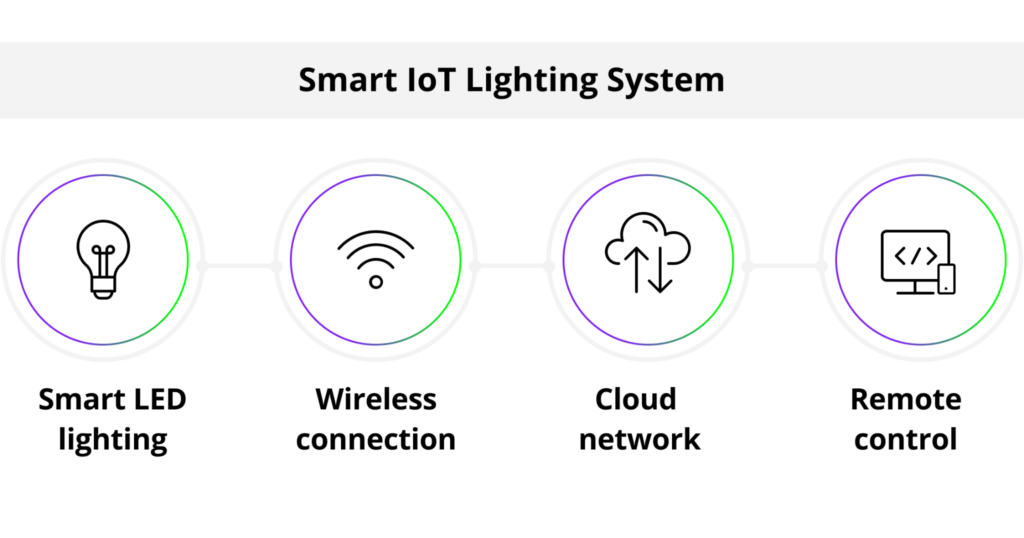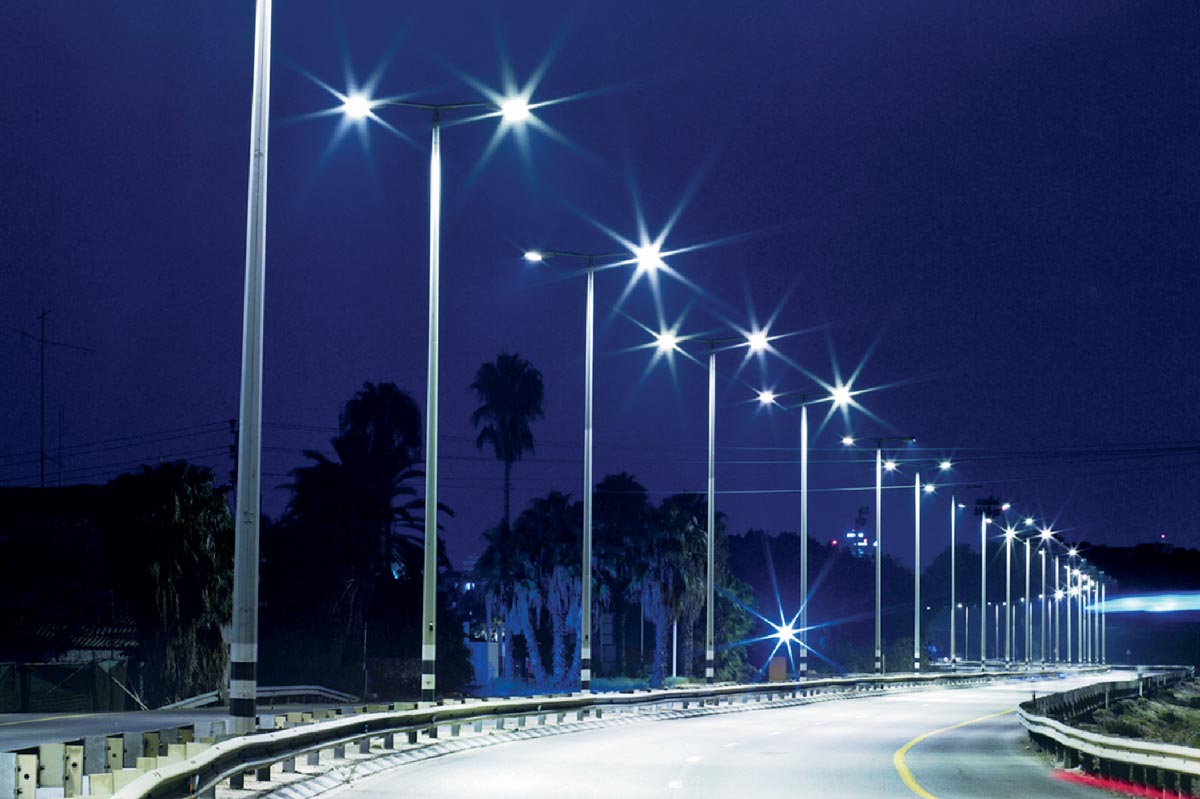How Do You Make a Smart Street Light Project?
Introduction
As the demand for smarter and more efficient urban infrastructure continues to rise, the focus on upgrading street lighting systems has intensified within the lighting industry. Implementing a smart street light project involves a meticulous blend of technology, planning, and collaboration.
From integrating sensors and communication networks to optimizing energy consumption and enhancing public safety, the process of creating a smart street light project is multifaceted and requires careful consideration of various factors.
In this guide, we’ll delve into the essential steps and considerations involved in making a smart street light project a reality. Whether it’s selecting the right components, designing an effective system, or navigating regulatory requirements, we’ll provide insights to help stakeholders in the lighting industry embark on successful smart streetlight initiatives.
Introduction to Smart Street Lights
Smart streetlights integrate various sensors, communication modules, and advanced control systems to optimize their operation. Unlike conventional street lights, these intelligent fixtures can dynamically adjust parameters such as brightness and timing based on real-time environmental data and user-defined settings.
At the core of smart street lights are sensors that capture data on factors like pedestrian and vehicular movement, ambient light levels, temperature, and humidity. This data is then processed by onboard controllers or transmitted to a central management system for analysis. Based on the analyzed data, the lights autonomously adapt their illumination levels and scheduling, maximizing energy efficiency and enhancing functionality.
The adoption of smart street lights offers a plethora of advantages. Their adaptive lighting capabilities significantly reduce energy consumption compared to static lighting systems, leading to substantial cost savings and environmental benefits. Additionally, these lights improve public safety by providing optimal illumination levels in specific areas and facilitating rapid response to emergencies through integrated alert systems.
Despite their numerous benefits, smart street lights pose certain challenges and considerations. One of the primary concerns is the initial investment cost, which can be higher than traditional lighting infrastructure due to the incorporation of advanced components. Additionally, issues related to data privacy, security, and interoperability must be carefully addressed to ensure the seamless and secure operation of these systems.
Components of a Smart Street Light Project
When delving into the architecture of a smart street light project, several fundamental components form the backbone of its functionality and efficiency:
LED Lighting Technology
At the heart of modern street lighting systems lies LED technology, replacing traditional incandescent or fluorescent bulbs. LED lights offer superior energy efficiency, longevity, and controllability. Their ability to dim or brighten dynamically according to ambient conditions or predefined schedules significantly reduces energy consumption and maintenance costs while enhancing overall visibility and safety.
Sensors and IoT Devices

Integrating sensors and Internet of Things (IoT) devices into streetlights empowers municipalities with data-driven insights and automated functionality. These devices encompass a diverse array of sensors, including motion detectors, ambient light sensors, temperature sensors, and air quality monitors, among others. They enable real-time environmental monitoring, pedestrian and vehicular traffic analysis, and adaptive lighting control strategies, contributing to optimized resource allocation and enhanced urban management.
Communication Networks
Efficient communication networks serve as the conduit for seamless data transmission and control commands within smart street light ecosystems. Technologies like LoRa (Long Range) and NB-IoT (Narrowband IoT) offer robust, low-power, wide-area connectivity solutions tailored to the unique requirements of IoT deployments. By leveraging these networks, streetlights can exchange sensor data, receive remote commands for luminance adjustments, and participate in mesh networking for extended coverage and reliability.
Centralized Control Systems
Centralized control systems act as the orchestrator of smart street light operations, providing a unified interface for configuration, monitoring, and management. These systems typically employ cloud-based platforms or local servers equipped with sophisticated software modules for data analytics, event processing, and decision-making.
Administrators can remotely monitor lighting performance, configure operational parameters, and implement dynamic scheduling algorithms to adapt to changing environmental conditions or traffic patterns in real-time. Furthermore, integration with smart city platforms enables cross-domain data correlation and facilitates proactive maintenance strategies, ensuring the longevity and sustainability of the infrastructure.
How To Plan and Design a Smart Street Light Project

To design and plan a smart streetlight, it’s crucial to approach this with precision and attention to detail to ensure seamless integration and optimal performance.
Conducting Comprehensive Needs Assessment
Begin by conducting a thorough needs assessment to define the project’s objectives clearly. Determine key metrics such as energy efficiency targets, lighting levels, and environmental impact goals. This assessment forms the foundation for the entire project.
Performing Detailed Site Surveys
Site surveys are critical for gathering essential data about the deployment area. Utilize advanced surveying tools to collect information on existing infrastructure, geographical features, and environmental conditions. This data guides the placement of light fixtures and the selection of supporting technology.
Selecting Appropriate Technology Stack
Choose a technology stack that aligns with project requirements and goals. Consider factors such as connectivity options (e.g., cellular, Wi-Fi, LoRaWAN), sensor capabilities (e.g., motion detection, ambient light sensing), and control systems (e.g., centralized management platforms, edge computing solutions).
Developing Detailed Technical Specifications
Develop comprehensive technical specifications outlining equipment specifications, communication protocols, and installation guidelines. This document serves as a blueprint for vendors and contractors involved in the implementation phase, ensuring consistency and compliance with project requirements.
Integrating with Existing Infrastructure
Ensure seamless integration with existing infrastructure such as power grids, communication networks, and smart city platforms. Employ standardized interfaces and protocols to facilitate interoperability and future scalability.
Establishing Robust Data Management Practices
Implement robust data management practices to handle the influx of data generated by smart street lights. Utilize cloud-based platforms or on-premises servers for data storage and processing, ensuring security, scalability, and real-time analytics capabilities.
Conducting Pilot Deployments
Execute pilot deployments in select areas to validate technology performance and assess real-world feasibility. Gather feedback from stakeholders and iterate on the design as needed before full-scale deployment.
Implementing Monitoring and Control Systems
Deploy monitoring and control systems to remotely manage and optimize street light operations. Leverage advanced analytics algorithms to adjust lighting levels based on environmental conditions, traffic patterns, and user preferences, maximizing energy savings and enhancing safety.
Establishing Maintenance and Support Frameworks
Develop robust maintenance and support frameworks to ensure ongoing reliability and performance of the smart street light infrastructure. Implement proactive maintenance schedules, remote diagnostics, and rapid response protocols to minimize downtime and optimize operational efficiency.
Conclusion
When initiating a smart street light project, you should focus on strategic planning and execution. Opt for energy-efficient LED fixtures and integrate advanced sensors for smart functionality. Additionally, implement a robust control system for centralized management and real-time monitoring. Furthermore, prioritize connectivity options such as IoT technology for seamless communication between street lights and a central control hub. By following these steps and leveraging innovative technologies, you can develop a smart street light project that enhances safety, reduces energy consumption, and promotes sustainability in urban environments.






